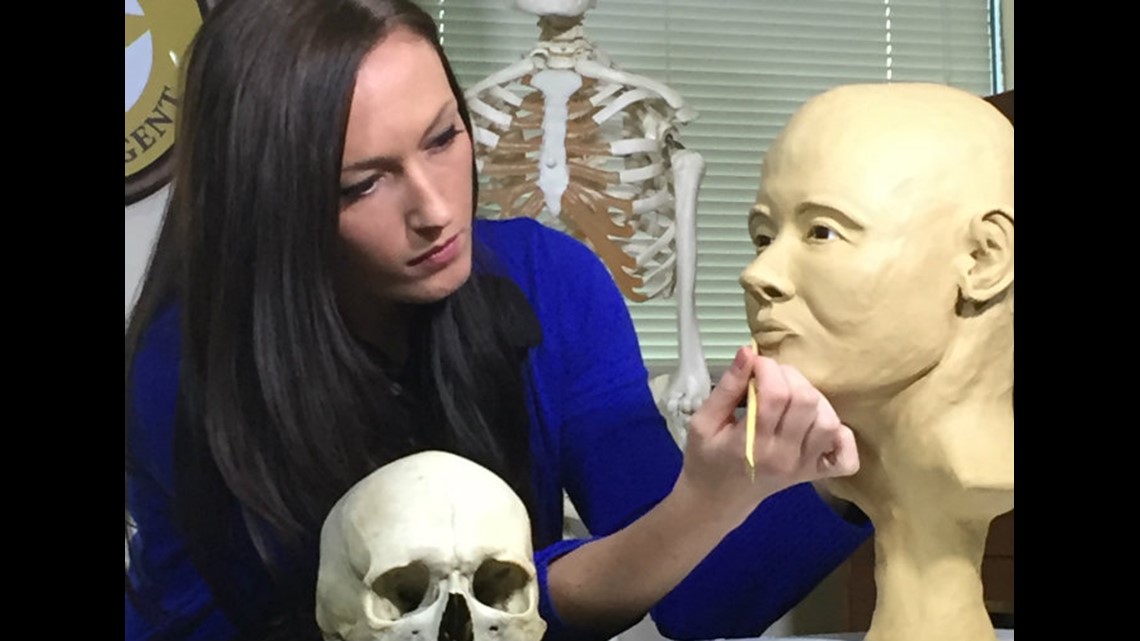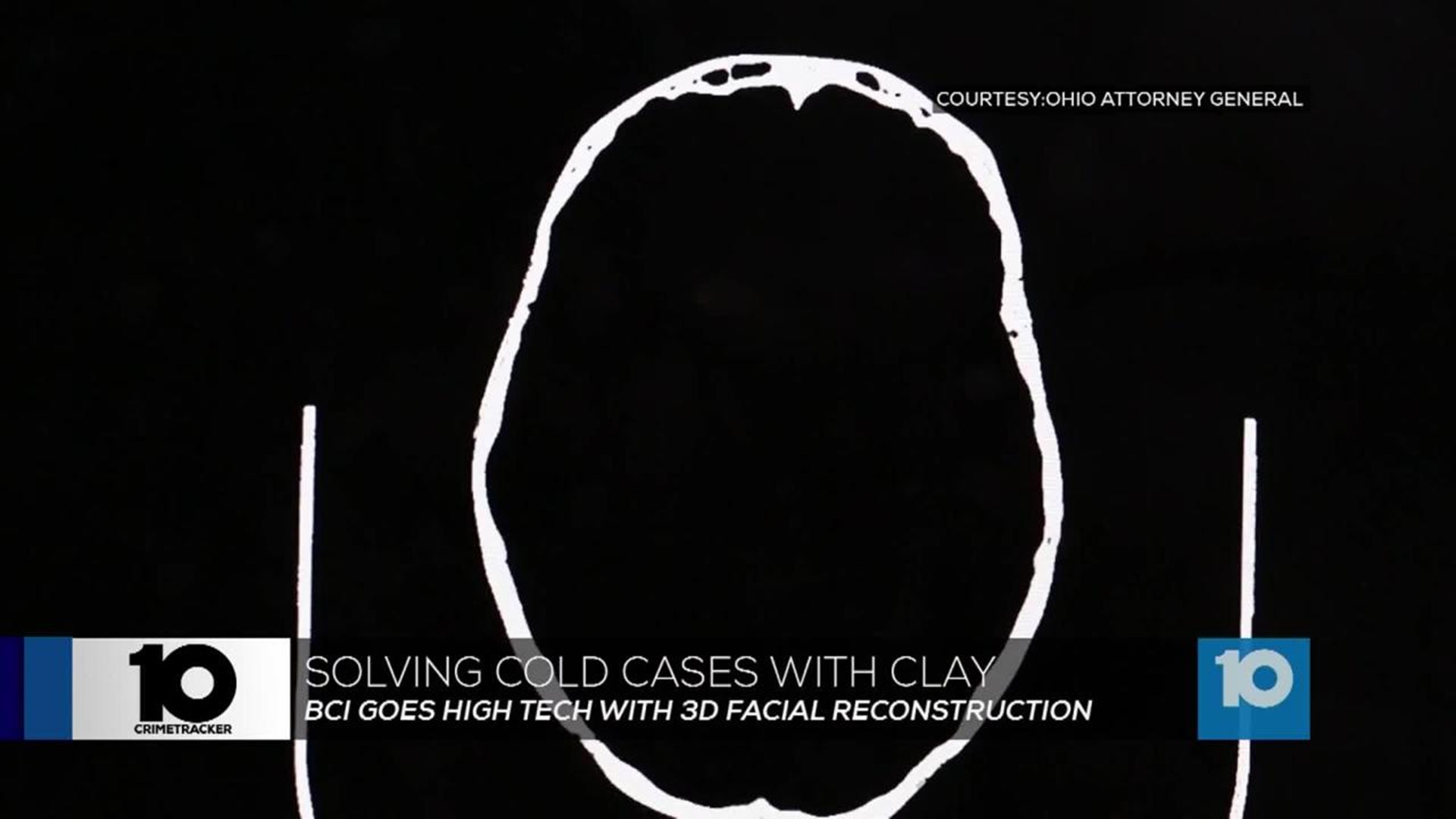LONDON, Ohio -- Samantha Molnar describes her work as emotional but rewarding.
“It’s not just an art project,” says Molnar, a criminal intelligence analyst at Ohio’s state crime lab, the Bureau of Criminal Investigation and Identification. “It can really work to identify people who don’t really have their names anymore.”
Molnar is referring to facial reconstruction technology that can take a human skull and transform it into a 3D sculpture that is nearly identical to what a person may have looked like while alive.
“It took my breath away when I saw the comparison,” says Molnar while describing the first time she saw a reconstruction project connect to a missing persons case.
On Thursday, Ohio Attorney General Mike DeWine revealed the first Ohio case in years to utilize this forensic technology, thanks to Molnar’s 70 hours of sculpting. Detectives from the Greene County Sheriff’s office went to BCI after DNA and other leads turned cold seven months after the remains of a woman were found south of Xenia, near Dayton.
The only clue was the woman’s skull and a pair of pink striped pants.


Molnar took the skull, which was missing its mandible (the lower jaw portion of a skull), to the Ohio State Digital Union. Layer by layer, specialized printers spent up to 70 hours creating a 3D version of the skull.
“This is definitely the first time we’ve printed a real human skull before,” says Jay Young, the technician that helped create the skull from a CT scan.
“It is accurate down to about .1 of a millimeter, so when we’re talking about details of a skull, that’s pretty accurate,” he adds.
From there, Molnar gets to work knowing that what she ends up creating could be lead to the missing link between an unidentified skull and a name for the woman who was found in May of 2016.
“I can say that when you get to this point, you get the eyes and ears and nose on, they start to be somebody,” she says about how the connection she feels throughout the process.


“It’s kind of sad to hold someone’s skull in your hand and not just a 3D print, but it’s their skull,” she says about the forensic process. “And to know that someone’s family won’t be there at Christmas or Thanksgiving, and you want to give that family closure.
CrimeTracker 10 found 90 cases listed on the Ohio Attorney General’s website for unidentified remains, 15 of them in central Ohio. But not all of the unidentified human remains qualify for the facial reconstruction.
Facial reconstruction is considered a final step in the investigative process of identifying human remains. Molnar says BCI will accept requests from local law enforcement agencies, but only after every other option has been exhausted, such as DNA, dental records, tips, or identification through significant characteristics, such as tattoos.
“There’s thousands out there, we know there’s infinite amounts of skulls out there that needs faces,” says Molnar, who has worked at BCI for the past two years.

